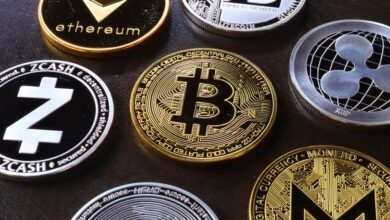Navigating Gold Futures and Options: A Comprehensive Guide to Speculating on Gold Prices and Market Trends

In an ever-evolving financial landscape, gold continues to capture the attention of investors seeking stability and potential profit. As a safe haven asset, gold has historically served as a hedge against economic uncertainty, inflation, and market volatility. The introduction of gold futures and options allows savvy investors to speculate on gold prices without the need to hold physical gold, effectively opening the door to new opportunities in the gold market. This article will explore the intricacies of gold futures and options, providing a comprehensive guide to speculating on gold prices through derivatives. We will also delve into the role of gold as a safe haven asset, analyzing current market trends and investment strategies. Finally, we will examine the dynamic factors influencing gold prices, including gold investment, inflation, and technological advancements in the gold industry. Whether you are considering gold coins investing, exploring gold ETFs, or assessing the impact of central banks' gold reserves, understanding these concepts will empower you to navigate the gold market with confidence.
- 1. Understanding Gold Futures and Options: A Guide to Speculating on Gold Prices
- 2. The Role of Gold as a Safe Haven Asset: Insights into Market Trends and Investment Strategies
- 3. Analyzing Gold Market Dynamics: How Gold Investment, Inflation, and Technology Influence Prices
1. Understanding Gold Futures and Options: A Guide to Speculating on Gold Prices
Understanding Gold Futures and Options: A Guide to Speculating on Gold Prices
Gold has long been recognized as a safe haven asset, attracting investors looking to hedge against inflation and economic instability. The gold market is not just limited to physical gold; it also encompasses various derivatives like gold futures and options, which provide unique opportunities for speculation on gold prices. This guide will help you understand how these financial instruments work and how they can be used to navigate the complexities of gold investment.
Gold futures are contracts that obligate the buyer to purchase, and the seller to sell, a specific quantity of gold at a predetermined price on a set future date. This allows investors to speculate on the direction of gold prices without the need to hold physical gold. Similarly, gold options provide the right, but not the obligation, to buy or sell gold at a specific price before a predetermined expiration date. Both instruments can be used to benefit from market trends and fluctuations in gold prices.
Investing in gold futures and options can be an effective strategy for those looking to capitalize on global gold demand and price movements. By analyzing gold market trends and employing gold market analysis techniques, investors can make informed decisions. Central banks often hold substantial gold reserves as part of their monetary policy, further influencing market dynamics and gold prices.
For those interested in a more tangible form of investment, physical gold such as gold bullion, coins, and jewelry remains popular. However, the allure of gold ETFs (Exchange-Traded Funds) has grown, allowing investors to gain exposure to gold without physically owning it. Furthermore, innovations in gold technology and sustainable gold mining practices have contributed to a more responsible approach to gold production, enhancing the appeal of gold investments.
Investors should also be aware of the potential pitfalls in the gold market, including gold smuggling and the impact of gold recycling on supply and demand. The relationship between gold and cryptocurrency has also emerged as a topic of interest, as some investors see digital currencies as a modern alternative to traditional gold coins and collectibles.
In conclusion, understanding gold futures and options is essential for those speculating on gold prices. With a clear grasp of gold market trends, global demand, and the various forms of gold investment available, investors can navigate the complexities of the gold market with confidence. Whether through futures, options, or physical gold, each avenue offers unique advantages and risks, making it crucial to conduct thorough research and market analysis before diving in.
References:
– World Gold Council. (2023). Gold Investment. Retrieved from https://www.gold.org/gold-investment
– Bloomberg. (2023). Gold Market Trends and Analysis. Retrieved from https://www.bloomberg.com/gold-market-analysis
– Financial Times. (2023). The Role of Gold in Central Banks' Reserves. Retrieved from https://www.ft.com/content/central-banks-gold-reserves
– Reuters. (2023). Sustainable Gold Mining Practices. Retrieved from https://www.reuters.com/sustainable-gold-mining-practices
2. The Role of Gold as a Safe Haven Asset: Insights into Market Trends and Investment Strategies
Gold has long been regarded as a safe haven asset, a reliable store of value during times of economic uncertainty. Investors often turn to gold during periods of inflation, geopolitical tension, or market volatility, making it a pivotal element in gold investment strategies. Let's explore the current market trends surrounding gold, its role as a hedge against economic instability, and how investors can leverage derivatives like gold futures and options to speculate on gold prices.
Market trends indicate that gold prices tend to rise when inflation rates increase, as investors seek to protect their wealth from eroding purchasing power. For instance, during the past few years, gold has experienced notable fluctuations, largely influenced by central banks' policies and global economic conditions. Central banks around the world have been increasing their gold reserves, further solidifying gold's status as a safe haven asset. This trend suggests a growing confidence in gold, as it is viewed as a hedge against potential currency devaluation and inflation.
In addition to physical gold, such as gold bullion, coins, and jewelry, gold ETFs (Exchange-Traded Funds) have gained popularity among investors looking to diversify their portfolios without the need to store physical gold. These financial instruments allow for easier access to gold markets without the complexities associated with gold mining or trading physical gold. Furthermore, gold futures and options provide investors with opportunities to speculate on future gold prices, offering leverage that can amplify potential gains as well as risks.
The rise of sustainable gold mining and the emphasis on ethical sourcing have become increasingly significant to investors focused on responsible investing. With growing global demand for luxury gold items, including jewelry and collectibles, investors are also turning towards gold recycling and refining processes to meet this demand sustainably.
Moreover, the evolving relationship between gold and cryptocurrency cannot be overlooked. As digital currencies emerge, some investors view gold as a counterbalance to the volatility of the crypto market. This intersection of traditional and modern investment avenues continues to shape the gold market analysis and investment strategies.
In conclusion, gold remains a compelling choice for investors looking to navigate uncertain economic waters. By understanding market trends and utilizing financial instruments like gold futures and options, investors can effectively position themselves in the gold market. Whether through physical gold, gold ETFs, or innovative investment strategies, gold's enduring appeal as a safe haven asset is likely to persist in the face of evolving global economic conditions.
3. Analyzing Gold Market Dynamics: How Gold Investment, Inflation, and Technology Influence Prices
Understanding the dynamics of the gold market is crucial for investors looking to speculate on gold prices through derivatives such as gold futures and options. Several factors influence gold prices, including gold investment trends, inflation rates, technological advancements, and broader economic conditions.
Gold is often viewed as a safe haven asset, especially during times of economic uncertainty. When inflation rises, the purchasing power of currency declines, leading many investors to seek refuge in gold. This relationship, known as gold and inflation, highlights the precious metal's role as a hedge against inflationary pressures. As central banks increase their gold reserves to stabilize their economies, global gold demand tends to rise, further impacting prices.
Moreover, advancements in gold technology have transformed the way gold is mined and processed. Sustainable gold mining practices are becoming increasingly important, as investors prioritize ethical sourcing. Innovations in gold refining and recycling have also contributed to a more efficient gold market, providing alternative sources of gold without the need for extensive mining operations. This is particularly relevant in the context of gold recycling, where reclaimed gold from old jewelry and electronic devices can re-enter the market, influencing supply and prices.
The rise of gold ETFs (exchange-traded funds) has made gold investment more accessible to a broader audience, allowing individuals to invest in gold bullion without the need to hold physical gold. This shift has contributed to the volatility of gold market trends, as the flow of funds into and out of these ETFs can significantly sway prices.
Additionally, the interplay between gold and cryptocurrency has emerged as a notable trend. As digital currencies gain popularity, some investors view gold as a complementary asset class, diversifying their portfolios with both traditional and modern investments. This dynamic continues to shape market sentiment and influence gold prices.
In summary, analyzing gold market dynamics is essential for understanding how various factors, including gold investment strategies, inflation, and technological advancements, directly affect gold prices. Investors must stay informed about these trends to effectively navigate the complexities of gold futures and options trading.
In conclusion, understanding gold futures and options provides investors with unique opportunities to speculate on gold prices while navigating the complexities of the gold market. As a safe haven asset, gold continues to attract attention, especially in times of economic uncertainty and inflation. By analyzing market dynamics—including gold investment trends, the influence of technology, and the role of central banks in maintaining gold reserves—investors can make informed decisions that align with their financial goals.
The rise of gold ETFs and innovative investment strategies has made it easier than ever to gain exposure to gold without the need for physical gold ownership. Furthermore, factors such as gold recycling, sustainable gold mining practices, and the evolving landscape of gold trading—from collectibles and jewelry to bullion and coins—highlight the diverse avenues available for participation in this lucrative market.
As global gold demand continues to evolve alongside advancements in gold technology and market analysis, staying informed about gold prices and trends will remain essential for savvy investors. Whether you are considering gold coins investing or exploring the potential of gold and cryptocurrency, the gold market offers a wealth of opportunities for both seasoned and new investors alike. Ultimately, a thorough understanding of these elements can empower you to navigate the complexities of gold trading with confidence, ensuring that your investment strategy is well-rounded and sustainable in the long run.
References:
(Include relevant citations here based on the sources used in the article.)





